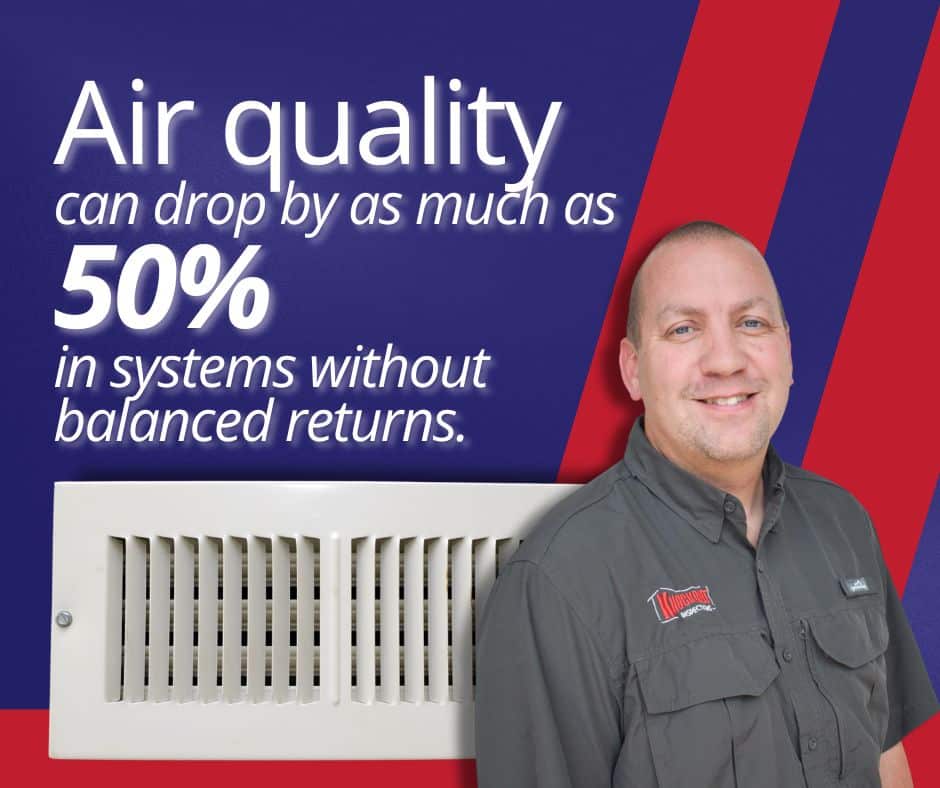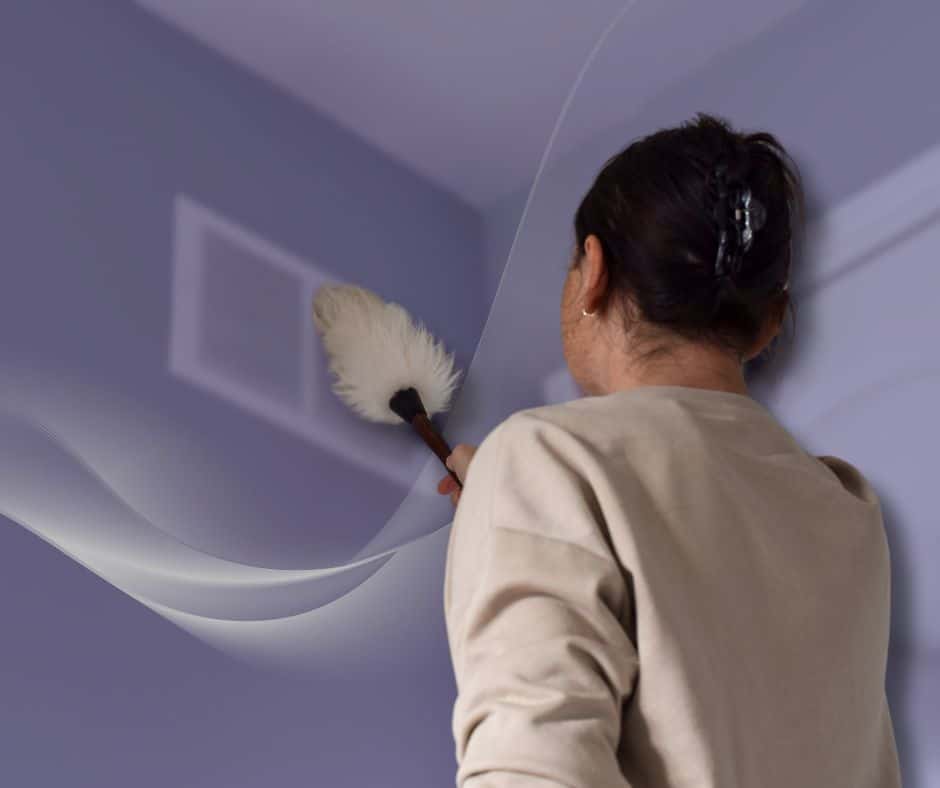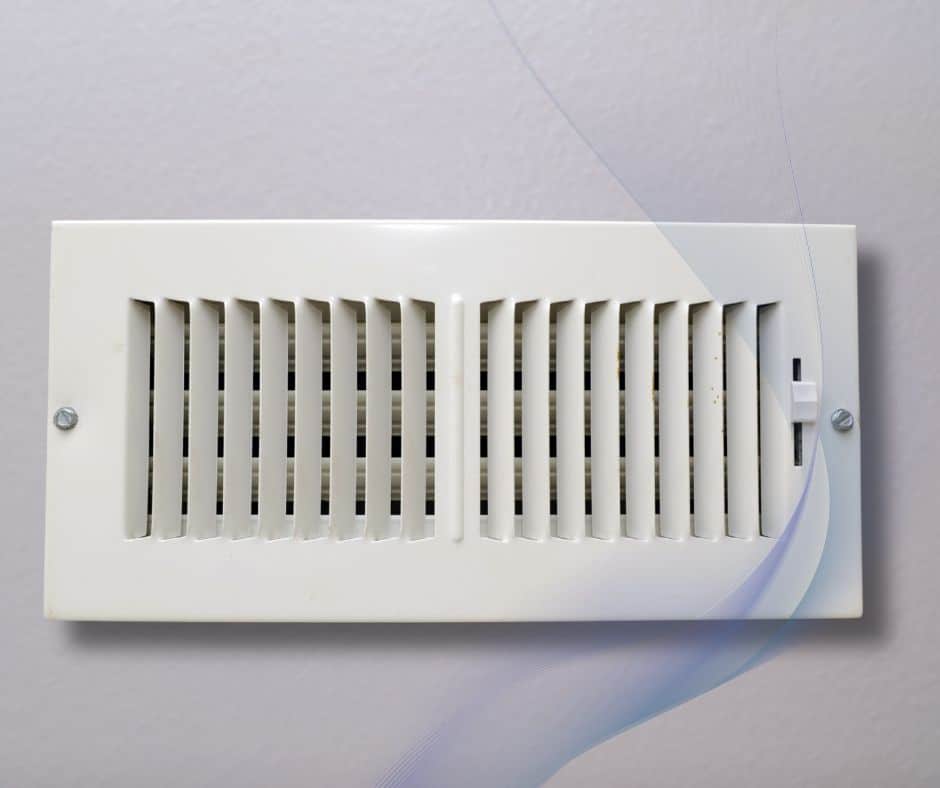Most homeowners only think about the vents that blow warm or cool air into each room. But for your HVAC system to work properly, that air needs a way to return. In older homes, cold air return design is often overlooked or outdated.
A cold air return pulls used air from your living spaces back into the HVAC system. This helps maintain air pressure, temperature control, and overall system efficiency. If your home’s return setup is poorly designed, blocked, or missing entirely, your system will struggle to keep up.
At Knockout, we evaluate airflow issues every day. Older homes often have systems that were retrofitted without proper duct design, or that have been altered over time. Understanding how cold air returns are supposed to work can help you identify why your system may be underperforming.
Why Cold Air Returns Matter
Every HVAC system needs a balance between supply and return.
Supply vents push conditioned air into your rooms. Return vents pull it back into the system. This loop keeps air moving evenly through the home.
When the return side of the system is missing or inadequate, several problems can start to show up:
- Some rooms may always feel warmer or colder than others
- Air may feel stagnant or humid in certain areas
- Your system may run longer and harder than it should
- Utility bills may go up, even with routine maintenance
- Your blower motor may wear out sooner
These issues are especially common in older homes. Many were designed for a different type of heating or cooling system entirely. Central HVAC systems were often added later without a full redesign of the ductwork.
That leads to a mismatch between what the system needs and what the house can provide. According to Energy Star, air quality may drop by 50% in systems without balanced returns.

What We See in Older Homes
Cold air return issues come in many forms. During inspections, here are some of the most common:
1. Too few return vents
Some homes have only one or two returns for the entire structure. This isn’t enough to create a balanced airflow. Rooms far from the return vent tend to be stuffy, while rooms closer to it may pull more than their share of air.
2. Returns only in hallways
We often find homes where the only return vent is in the hallway. Air has to find its way back from each room, usually through the gap under the door. This restricts airflow and can make pressure problems worse.
3. Undersized return ducts
Even if return vents exist, they might not be big enough for the system they’re connected to. Undersized ducts choke off airflow and cause the system to work harder, especially during peak seasons.
4. Blocked returns
Homeowners sometimes unknowingly block return vents with furniture, curtains, or décor. In some remodels, returns get drywalled over completely. A blocked return means less air gets back to the system, which reduces comfort across the house.
5. Short-circuiting airflow
If the return is placed too close to a supply vent, air may go directly back to the system without fully circulating through the room. This limits how well the space is heated or cooled and wastes energy.
Designing Better Cold Air Returns
A good return system does more than just remove air. It keeps pressure even, helps remove dust and allergens, and lets your system work more efficiently. In homes with duct design based on Manual D principles, returns are carefully sized and placed to work with supply vents and room layout.
Here’s what a better design might include:
- Return vents in larger or closed-off rooms
- Transfer grilles or jumper ducts to allow air to move freely
- Ducts sized to match the load and layout of the home
- Return locations that are not competing with supply vents
- Sealed connections that keep the system pulling only from inside air, not attics or crawl spaces
These details may not be visible to most homeowners, but they make a big difference in system performance and energy use.
How Inspections & Maintenance Help
We approach airflow and cold air return design differently than a basic visual check. Our team looks at your HVAC system through the lens of Manuals J, S, and D. That means we consider system load, sizing, and duct layout together, not in isolation.
During a typical inspection, we evaluate:
- The location and size of each return vent
- Whether the return airflow is strong and consistent
- Signs of pressure imbalance, like a door slamming or whistling vents
- Whether ducts appear sealed, rusted, or modified
- How the system compares to modern airflow standards
If your HVAC system is short-cycling, failing to maintain temperature, or constantly running, the return design may be a key issue.
Even if the cold air return design isn’t perfect, small steps you take on a schedule can make a big difference in airflow and system strain.
Try to…
- Keep return vents clear by checking that furniture, rugs, or curtains aren’t blocking them.
- Change your air filter regularly, at least every 1 to 3 months. A clogged filter reduces airflow and makes returns work harder.
- Vacuum vent covers to remove dust buildup that can restrict air movement.
- Listen for changes, like louder airflow, longer run times, or uneven temperatures. These may point to a return issue that needs attention.
- Schedule seasonal maintenance with an HVAC pro to make sure the system stays balanced, especially if it’s older or has been modified.

Common Related Questions
Do I need a return vent in every room?
Not always. But every major zone of the home should have a return path. If a room has a door that closes, it needs either a dedicated return or a way to let air pass through.
Can I block a return vent to save energy?
No. Blocking a return actually makes your system work harder. It reduces airflow and may cause freezing, overheating, or added wear on the blower.
How do I know if my return vent is working?
Hold a piece of tissue or light paper near the vent. If the air pulls inward steadily, it’s working. Weak or no pull could indicate blockage or poor duct condition.
Is it safe to add more return vents myself?
It’s better to consult with an HVAC contractor or inspector. The system must be balanced. Adding vents without adjusting duct size or blower settings can create new problems.
Conclusion
Cold air return design is often out of sight, but it’s central to how well your HVAC system works. In older homes, poor return design is one of the most common reasons for uneven temperatures and inefficient performance.
If your home has been retrofitted over the years or if your HVAC system just doesn’t seem to keep up, a closer look at return airflow might reveal what’s been missing.
Knockout takes airflow and energy efficiency seriously, so we inspect systems with the whole home in mind.

